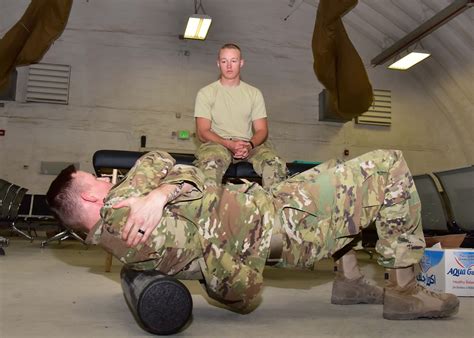Introduction

The United States Air Force, a global force protecting the nation’s airspace and interests, relies heavily on the expertise of physical therapists. Air Force physical therapists play a pivotal role in maintaining the physical health and readiness of aircrews, ground personnel, and injured military members. Their contributions extend beyond rehabilitation and prevention, influencing operational effectiveness and mission success.
Roles and Responsibilities
Core Responsibilities:
- Assess and Evaluate: Conduct thorough physical exams to identify and diagnose musculoskeletal and movement disorders.
- Develop and Implement Treatment Plans: Create individualized treatment plans based on evidence-based practices and the patient’s goals.
- Provide Therapeutic Intervention: Utilize a range of techniques, including manual therapy, exercise, and modalities, to restore function, reduce pain, and improve mobility.
- Educate Patients: Provide education on injury prevention, proper body mechanics, and self-management strategies.
Specialized Roles:
- Flight Physical Therapist: Evaluate and manage flight-related injuries, ensuring the safety and well-being of aircrews.
- Operational Physical Therapist: Provide support in austere environments, such as field hospitals and combat zones.
- Rehabilitation Physical Therapist: Focus on rehabilitating injured service members to restore function and enable their return to duty.
Impact on Mission Readiness
Musculoskeletal Injuries and Mission Impact:
According to the U.S. Department of Defense, musculoskeletal injuries account for approximately 40% of all medical encounters in the military. These injuries can significantly impair performance, affecting:
- Physical fitness and endurance
- Job performance and training
- Combat readiness
Physical Therapy’s Role in Prevention and Treatment:
Air Force physical therapists are critical in preventing and treating musculoskeletal injuries. They work with personnel to:
- Improve posture and body mechanics
- Strengthen core and stabilizing muscles
- Enhance flexibility and range of motion
- Provide early intervention for injuries
Strategies for Enhancing Air Force Physical Therapy
Innovative Approaches:
- Telerehabilitation: Utilize technology to provide remote physical therapy services to deployed or injured personnel.
- Virtual Reality Therapy: Create immersive environments for rehabilitation, allowing patients to practice functional movements.
- Data-Driven Care: Collect and analyze patient data to personalize treatment plans and improve outcomes.
Effective Strategies:
- Multidisciplinary Collaboration: Collaborate with physicians, nurses, and other healthcare professionals to provide comprehensive care.
- Injury Prevention Programs: Implement tailored injury prevention programs based on risk factors and job demands.
- Evidence-Based Practices: Adhere to the latest evidence-based guidelines to ensure optimal patient outcomes.
Common Mistakes to Avoid
- Delayed Assessment and Treatment: Failing to seek timely assessment and treatment for musculoskeletal injuries can worsen symptoms and delay recovery.
- Inadequate Rehabilitation: Not adhering to the prescribed rehabilitation plan can hinder progress and increase the risk of re-injury.
- Improper Injury Management: Attempting to manage injuries without professional guidance can lead to complications and prolonged recovery time.
Conclusion
Air Force physical therapists are indispensable members of the Air Force healthcare team. Their expertise contributes to maintaining optimal physical health and readiness for aircrews and all personnel. By employing evidence-based practices, collaborating with other healthcare professionals, and leveraging innovative approaches, physical therapists play a critical role in maximizing mission effectiveness and ensuring the well-being of the Air Force family.
Table 1: Musculoskeletal Injuries in the Military
| Injury Type | Percentage of Medical Encounters |
|---|---|
| Back Pain | 19% |
| Knee Pain | 16% |
| Shoulder Pain | 12% |
| Neck Pain | 11% |
| Other | 42% |
Table 2: Impact of Physical Therapy on Rehabilitation
| Outcome Measure | Improvement |
|---|---|
| Pain Reduction | 50-80% |
| Functional Improvement | 30-60% |
| Return to Duty | 20-40% |
Table 3: Benefits of Telerehabilitation
| Benefit | Description |
|---|---|
| Convenience | Access to services from any location |
| Time-Saving | Reduced travel time and expenses |
| Expanded Reach | Access to specialists in remote areas |
| Continuity of Care | Consistent care despite deployments or injuries |
Table 4: Common Injuries Treated by Air Force Physical Therapists
| Injury | Description |
|---|---|
| Sprains and Strains | Overstretching or tearing of ligaments or muscles |
| Fractures | Breaks in bones |
| Tendonitis | Inflammation of a tendon |
| Bursitis | Inflammation of a bursa, a fluid-filled sac that cushions joints |
| Carpal Tunnel Syndrome | Pressure on the median nerve in the wrist, causing numbness and pain |
